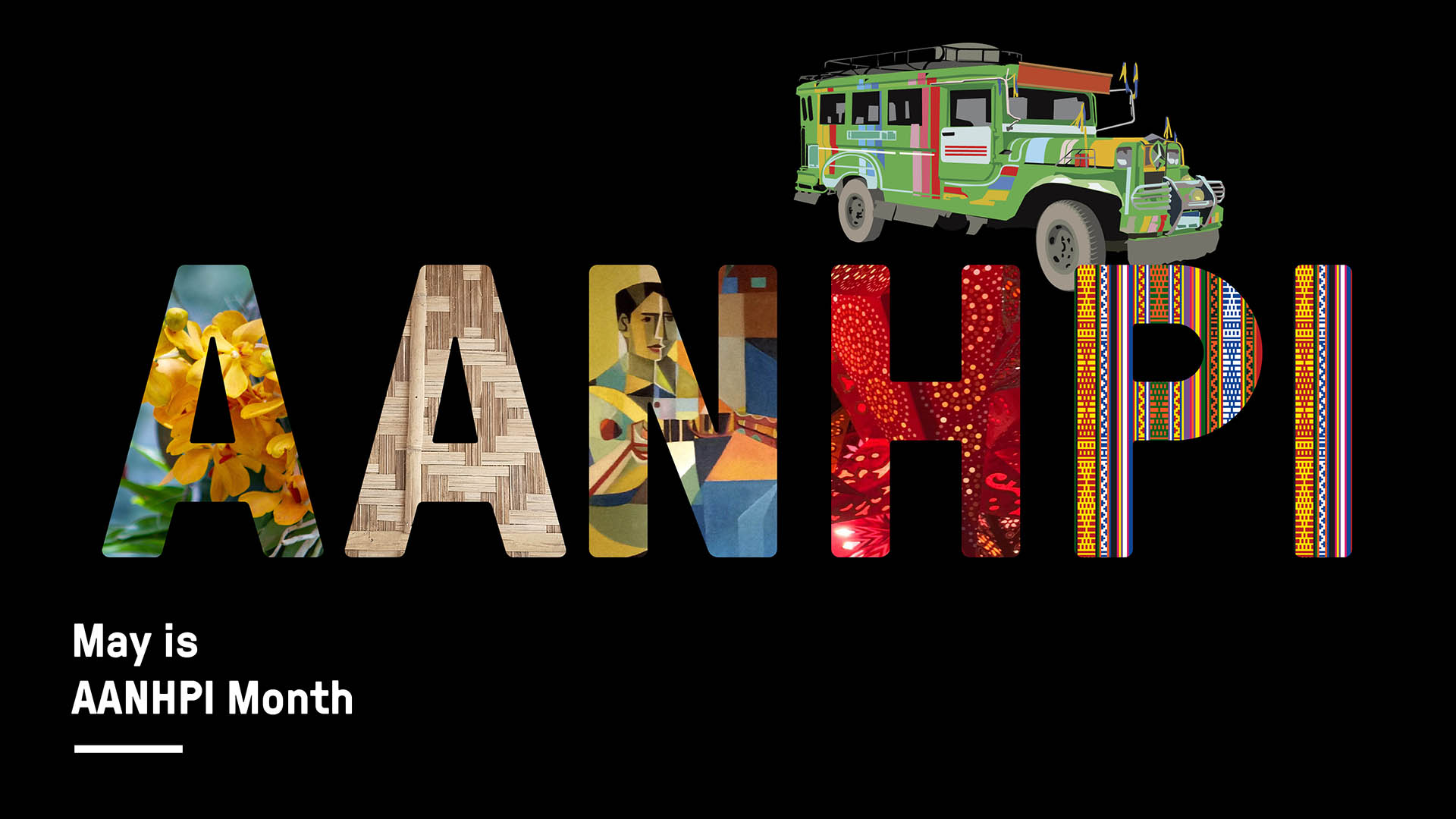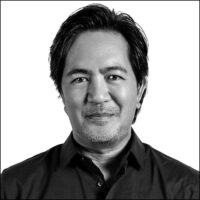SWA Co-CEO Gerdo Aquino
on AANHPI Heritage Month
May is dedicated to Asian-American, Native Hawaiian, and Pacific Islander Heritage. We asked SWA Co-CEO Gerdo Aquino for his opinion on the significance of the month, and about how his personal history resonates in his work and leadership in landscape and urban design.

We asked
SWA Co-CEO
Gerdo Aquino
for the back-story:
What does Asian-American, Native Hawaiian, and Pacific Islander Heritage Month mean to you?
In general, it’s a time of year when the United States is especially focused on the contributions of people of color within the AANHPI community. We often talk about the United States as a country of immigrants – about the fortitude it takes to face the challenges and potential of a new society and help build it. More importantly, it is a nation made up of some of our common territories’ indigenous stewards, such as the natives of Hawaii and American Samoa – whose cultures and traditions have had a significant impact within our collective communities. For example, we have leading public figures like Kamala Harris: a Vice President with a South Asian and Jamaican background. We also have one of the century’s most prominent public artists, Maya Lin, whose work has explicitly helped to memorialize troubling and divisive themes ranging from the Vietnam War to environmental decline.
I also consider myself and my colleagues at SWA to be empowered leaders from diverse backgrounds. Having been born in Virginia and raised in Florida, my Filipino ancestry is an important part of who I am as a husband and as a leader. Working in Los Angeles, and often working within multi-cultural neighborhoods, I believe my identity assists in developing a two-way sense of trust; of feeling seen and valued. When I’m leading a public engagement program or giving a speech, I commonly see Asian-Americans, Native Hawaiians, and Pacific Islanders. And they recognize something of themselves in me – a person of Asian-American descent who is leading a public discussion, and using their influence a bad situation to make things better.
In the big picture, I think it’s great that the U.S. has these periods commemorating a variety of distinct ethnicities and cultural backgrounds. It’s important that people know about their contributions to art, architecture, landscape architecture, and culture. Those are evolving every day, not just within a specific month. I believe that heightening general awareness can only be beneficial.
What advice can you share with young Asian-Americans, Native Hawaiians, and Pacific-Islanders who might be pursuing landscape architecture as a career path?
The best advice I can offer is to believe in yourself. We are all shaped by our environments, and the values instilled in us at an early age. This provides us with a strong foundation, confidence, and a unique point of view that will set you apart from others, and may lead you into work or projects where your unique experiences are key to making a difference. My parents are both Filipino, and migrated to the United States after my father joined the U.S Navy. My four siblings and I were all born in America, although in different states. Growing up in a Filipino military family meant two things: being happy, and having a purpose in life. These were goals that motivated me growing up, and that continue to do so.
Tell us a little bit about your personal history and upbringing.
I was raised in Jacksonville, Florida, and to be honest, I didn’t give much thought to my ethnicity at an early age – perhaps because Jacksonville is a bit of a melting pot in comparison to the rest of the Southeastern United States. I believe the first time I recognized I was different in any way was in grade school. There were forms I had to fill out back then that had boxes to check corresponding to ethnic identity. I believe “Asian” and “Pacific Islander” were both included, and I never knew exactly which box to check. As someone whose parents are from the Philippines… do I identify as Asian? Or am I a Pacific Islander? And to this day – and I’ve spoken to a lot of Asian-Americans, Pacific Islanders, and Native Hawaiians – I think Filipinos fall somewhere in the center, with Samoa and Guam (the Philippines also being an archipelago in the Pacific). But it depends on who you ask – there are thousands of islands in the Pacific.
The label “Asian-American” could extend from being born in the United States with that ancestry to naturalization – and people have diverse perspectives and interpretations of what the label itself means. I think it’s important to debate and discuss our differences. But the fact that we’re having discussions within and about the AANHPI community is what it’s all about.
What elements of your background and culture do you still carry with you today?
As a first-generation Filipino-American, I can say that my DNA is hard-wired to address every problem that may occur in the most inclusive and respectful manner possible. In my case, that’s the approach to challenges involved with any given landscape architecture project and everything it entails.
How did you first become interested in landscape architecture as a career?
Growing up on the Northern Florida coast, with its beautiful sandy beaches and coastal scenery, I spent a lot of time outside. I liked surfing, and I frequently located wave breaks in remote locations that required crossing dunes and shrubby woodland to reach. That journey out to the ocean has always appealed to me. Then, as I grew older, I watched development take over the places I loved. I was maybe 15 or 16 years old when I realized, “Hey, maybe I should get involved with a profession that preserves or enhances those landscapes.” Then came landscape architecture, and everything just melded together: design, preservation, and implementation. It all became a platform for me to genuinely engage with landscapes and their meaning.
What are some of your proudest professional accomplishments in your 26 years as a landscape architect?
As a landscape architect and urban planner working in Los Angeles and around the world, three experiences stand out. I’ve published a book with SWA called “Landscape Infrastructure – Case Studies by SWA” that future generations will be able to utilize. Second, I taught at Harvard Graduate School of Design and met excellent designers whom I believe will contribute to great work in landscape architecture. Finally, I am grateful for the projects in which I am involved, and to know that I am contributing to a positive change.
How is SWA’s design work contributing to diversity, specifically related to AANHPI communities and constituents?
There are so many historic enclaves in numerous cities – Chinatown, Koreatown, and, by the way, Filipino town! They exist for a reason: people of that ancestry were born and raised there. Multiple generations of those cultures endured, often in the face of exclusion from the wider metropolitan community, and were able to preserve their legacies and history while expanding to become more commercial or inclusive, with mixed-use and residential complexes. Their core DNA remains unchanged: the community has excellent dining and intriguing things to do – museums, cultural events, and so on. We have the expertise, as landscape architects and urban designers, to assist these communities in preserving and enhancing their qualities while also improving quality-of-life.
But in addition to being designers, we are also activists. We care profoundly about these underrepresented communities. Through housing, mobility, streetscapes, and parks, we can improve people’s lives. We can improve the environment by managing stormwater, planting trees to reduce heat island effects, and enhancing air and water quality. Our role, whether professionally or on a pro gratis basis, is to contribute – to listen to what the issues are. You don’t have to be of a specific ethnicity to join; simply participate and contribute your time or services.
For several years, for example, I’ve been involved with San Francisco’s Filipino Heritage District, which is one of the nation’s first districts dedicated specifically to preserving and enhancing the culture and history of Filipinos in that area. A lot of that work has been pro bono to this point, as they slowly shape who and what they want to be. We’re getting close to doing something really significant, possibly a master plan, and I hope to stay involved with them and bring more resources to them from SWA. And that makes me feel good. I think my mom would be proud.
What attracted you to SWA when you first joined the firm?
Well, it’s interesting. We have roughly 300 employees, which is due in part to the fact that we work globally, including in the Asia-Pacific region. When I graduated in 1996 and began interviewing at firms all over the world, every country in that region was booming with design and planning work. My last interview was with SWA. I met with Kalvin Platt, John Wong, and Bill Callaway, and one of the things that drew me in was the idea that I could do unique, environmental work not only in the United States, but also in Asia-Pacific, including the Philippines. I hadn’t spent much time in the Philippines at the time, and knowing that SWA was there made a difference to me.
Now, in 2023, more than half of our employees identify as Asian-American, Native Hawaiian, or Pacific Islander, and I wouldn’t be surprised if the same opportunities that drew me in also attracted a lot of the staff members we’ve hired. Our staff may seek to reconnect with their ancestries, or to engage with parts of Asia that they have never visited or have no personal connection to. I believe that travel, learning, and adventure are all highly appealing to designers in general.
Now, as the firm’s Co-CEO, what do you feel you bring to conversations with AAHNPI communities?
I participate in numerous public outreach and engagement activities, both locally in Los Angeles and around the country. What I bring is the two-way trust that I mentioned. AAHNPI faces can be found in practically every meeting I attend. And, perhaps more crucially, as a design leader who must frequently listen as well as persuade, those audiences see me as an articulate and active individual who understands and speaks out against social injustices that they believe are affecting their community. That trust is extended to SWA’s clients by bringing a certain authority through identity representation. It’s a validating experience to help lead our team.
You mentioned Kamala Harris and Maya Lin. Are there other prominent public figures with AANHPI backgrounds whom you admire, or who inspire you?
There are too many influential AANHPI leaders to list, but I think I’m most inspired by the work that our AANHPI staff are doing at SWA as planners, urban designers, and community activists. I want to continue to give them the tools and resources that they need in order to make a difference, not just for AANHPI Heritage Month, but every day. I’m pleased that we’re having more discussions about ethnicity within the firm itself – it not only helps us forge greater connections with our colleagues, but also helps us to reconnect with ourselves. None of us should forget where we’re from, and what our individual backgrounds can offer in terms of problem-solving and design solutions in our collective professions. I know for myself, I’m still on the lookout for that dune project that will remind me of surfing off the Florida coast.


